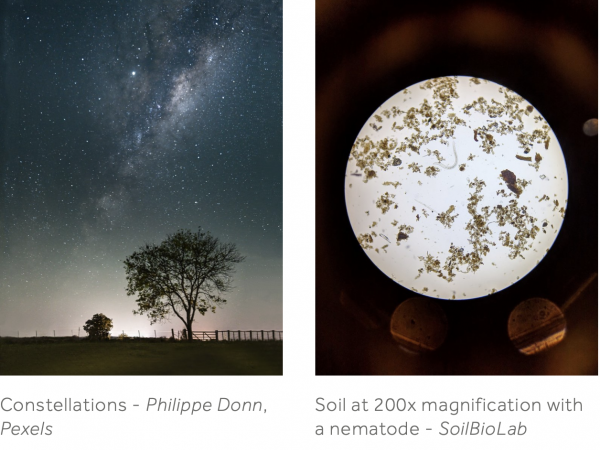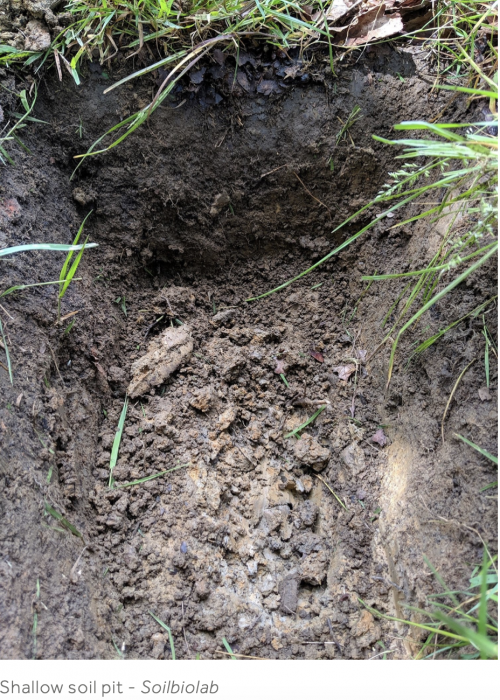Briefing Note: Regulation and Compliance Monitoring of Soils

Iain Fraser is Professor of Agri-Environmental Economics at the University of Kent’s School of Economics. His research interests cover various aspects of agricultural, environmental and resource economics. Since September 2012 he has been an editor of the European Review of Agricultural Economics.
The UK government’s 25 Year Environment Plan (YEP) and the proposed changes to how agriculture and the rural environment will be supported have implications for future policy design, implementation (especially compliance monitoring, regulation and enforcement) and evaluation. With specific reference to soils it has been proposed that farmers will be rewarded following the implementation of an Environmental Land Management System (ELMS). The reason to support and reward the sustainable management of soils is because soil quality is being lost due to poor agricultural practices.
Regulation of Soil Management Requirements
In the context of soils any policy that is introduced will first need to define the minimum requirements expected of farmers and land users - i.e. a duty of care. This minimum requirement, if it is to be enforced, will require that any breaches that are detected are subject to some form of penalty. Thus, regulation here could refer to the application of the polluter pays principle (PPP).
Compliance with Soil Management Requirements
The next aspect of policy and the element that has attracted most attention relates to the provision of increased soil quality. It has been argued that there are public goods benefits that will stem from this outcome and as such farmers should be rewarded for achieving these outcomes. In this case what is being proposed is an application of the provider gets principle (PGP).
Soil Quality Provision and Policy Design
With the introduction of payments for the provision of improvements in soil quality, agricultural policy as implemented via an ELMS is essentially redefining what has typically been referred to as agri-environmental policy (AEP). In this context, if a farmer is being offered an incentive for enhanced management (i.e. improvements in soil quality) then regulation in this context means compliance with the terms of a supply contract. By understanding the delivery of public goods as a contract between buyer (the government) and provider (a farmer) we can start to understand how policy will need to be framed, designed and evaluated.
There are 6 stages:
Stage 1: Identification of societal preferences, policy goals and objectives
Stage 2: Identification of participants conditional on the goals and objectives of policy
Stage 3: Specification of the type of incentive mechanism to be used – individual negotiation, standard contract or specific contract based on information elicited prior to the introduction of the contract via an auction
Stage 4: Compliance monitoring and enforcement regime
Stage 5: Contract and policy duration
Stage 6: Post-policy evaluation
Stages 1 and 2 are typically determined before the specific issue of policy design is considered as they fall within the domains of political economy and scientific recommendation. The policy design components as they relate to soil are covered by stages 3, 4 and 5. These stages will need to be considered simultaneously. Stage 6 is required to assess if the policy has achieved the goals and objectives stated. Given the focus of this note we will focus on stages 3 and 4.
Stage 3: Incentive Mechanism of Choice
As in any contract how the terms of reward are organised with a supply contact can differ depending on context and goods or services being provided. Firstly, the payments could be based on management activities (inputs) or, alternatively, on some measure of change in soil quality (output). The specific form of incentive payment could be a fixed quantity, it could be negotiated at the individual level or it could be derived as a result of some sort of procurement auction. All these approaches have been used with AEP and have also been the subject of policy pilot schemes via the market-based instruments (MBIs) policy.
Stage 4: Compliance Monitoring
There is an extensive literature on how economic agents respond to contracts. Many of the problems that emerge stem from information asymmetries: either adverse selection or moral hazard.
In the case of adverse selection, the provider - who in this case will be a farmer - (also called the agent) will know more about their own characteristics than the buyer - in this case the government (also referred to as the principal). For example, a contract can be subject to problems of adverse selection, i.e. a farmer secures an inappropriate contract.
However, what matters more in terms of compliance monitoring is moral hazard. This is the situation in which the farmer may take actions that are unobserved by the government which can lead to the contract requirements (i.e. the terms of the ELMS) not being satisfied. The decision to behave in this manner stems from the way in which the risk of being detected is evaluated relative to the likely penalty.
In practice developing a compliance monitoring regime will be complicated, especially with regard to soils. Some key issues that are well known are as follows:
I. The costs of compliance monitoring are non-decreasing as policy objectives become more complicated. There is a trade-off to be made between policy objectives and practical policy compliance monitoring. Sophisticated environmental objectives may yield significant benefits, but more effort will need to go into compliance monitoring.
II. If we require higher levels of accuracy of compliance monitoring this will only be achieved at increasing rates of cost. So zero levels of non-compliance are not a sensible policy target.
III. The practical aspects of compliance monitoring are likely to inform what the best options are in terms of evaluating policy delivery, e.g. inputs or outputs
Efforts to make compliance monitoring more effective can include targeting of scarce resources at particular groups of farmers. The targeting could be implemented based on soil types, farmer characteristics or other such measures.
From a practical-point of view compliance monitoring will be implemented by making farm visits, using land-mapping technology (Geographical Information Systems), and inspecting the financial records of farmers. Duration and frequency of visits also needs to be determined.
Some further observations
There are an array of additional issues that complicate any form of compliance monitoring, namely:
-
Clarity of objectives;
-
Farmer ability or knowledge of required practices in order to meet policy requirements;
-
The regulatory style – should policy implementation avoid excessive coercion and instead be flexible?
-
How long should payments continue for – 2, 5 or 10 years?
-
Farmer motivation – as either active or passive adopters of appropriate practices; and
-
Social norms may dictate that farmers change their soil management without the need for financial incentives
Concluding comments
There is nothing unique about how the delivery of soil quality via the ELMS will need to be monitored. We have plenty of experience of designing and evaluating AEP over the last 30 years. However, what is key to this is clarity regarding what is meant by soil quality and the agreed set of metrics to be used; and how these will be implemented “in the field” so as to allow this policy proposal to work.

At SoilBioLab we specialise in looking at and analysing the life in the soil, as a proxy for healthy soil, and over the last 2 years our client base has grown considerably. Moreover, when we began five years ago agricultural soil testing was the smallest customer sector. that we worked with. Now, this is actually the largest and where we see the largest share of growth.

In the case of these new enquiries, the situation is almost always the same: the farmer has started using cover crops or green manures and recently begun min or no-till. Usually, a variety of improvements are reported, some quite significant and attributable to the restoration of some natural processes. It then follows that they want to look at their soil life, so lift the receiver, and thus begins a standard 30-45 minute introductory call.
We see this pattern as a positive indication of a shifting mindset for many of our (under-valued) farmers. There is the sense of eagerness, willingness and capacity to urgently start learning about the land, and desire to begin getting closer to their soil – a more complete approach to soil and crop management, absolutely critical at this point in time.
It is not the first time that this attitude has graced farming. Less than a century ago, pioneering farmers and authors like Friend Sykes and Louis Bromfield understood the growing system to be part of the larger farm-organism. Their science-like curiosity was perfectly captured in their detailed accounts that linked the components of functioning soil.
Today, available technology likely has the most crucial role in shaping the farm cropping system, and science is often a companion to technology. It's come along for the ride - only now, it's strapped in next to the Stig on a hot-lap!
Finally, soil is sexy. Right?
Let's have some Rockstar scientists come forward and inspire.
The academic community has the opportunity to command a share of the limelight and assume its rightful place on the podium: asserting its voice, whilst vitally illustrating the risks of breaking things down into small parts such that we lose all sense of how the sum of these function together.

We move closer to an agreed set of standard indicators for healthy soil (thanks to the SSA putting together the new ‘A’ for academic-Team, aka the Science Panel), but how can we ensure that we capture (and measure!) the truly unseen component - the forces that bind the chemical, physical and biological aspects – gravity and soil space-time?
The 'Astro-world' has a great approach to tackling these kinds of problems.
Mathematicians, (Astro)physicists, (Astro)biologists, and (Astro)chemists work together, unified in their objective by a common goal or mission that is centrally managed by mission control. This is genuinely purposeful: best-in-class scientists and experts from industry collaborate on outcome-dependent work rather than studying in isolation, independently researching for research’s sake. Soil as a discipline has a little way to go, but perhaps alignment to a singular mission like Soils in Crisis is enough to focus us all.

Mankind is sandwiched somewhere between the ground and the sky. Both endless expanses are packed with planets and colonies, solar systems, and sophisticated food webs; stars are destined to supernova as organic matter is recycled. When you really think about it, the parity of soil and space is mind-blowing - it's just a matter of perspective and depends on how big or how small you are.
However, it does seem more difficult to rationalise soil as infinitely small and devote more of our attention (and the lens) back in on ourselves and the Planet. Yet this is what we need to do, now more than ever.
It still thrills me to see soil under a microscope and observe 'tiny universes' each day, through my work. I also love problem-solving alongside other passionate people, and measuring the concentrations of bacteria, fungi, protozoa, and nematodes in soil provides information that goes some way to achieve this as well as helping growers understand more about their field-soil. For others, digging a hole and looking at the different layers or counting earthworms conjures a similar excitement.
We need to engage more young people in this critical area of science to ensure the success of this mission. There's an emergency going on, and planet Earth's soils need our help.
Let’s all unite for Mission Soil!
Simon Parfey, July 2019
SoilBioLab: 213 The Commercial Centre, Picket Piece, Andover, Hants SP11 6RU